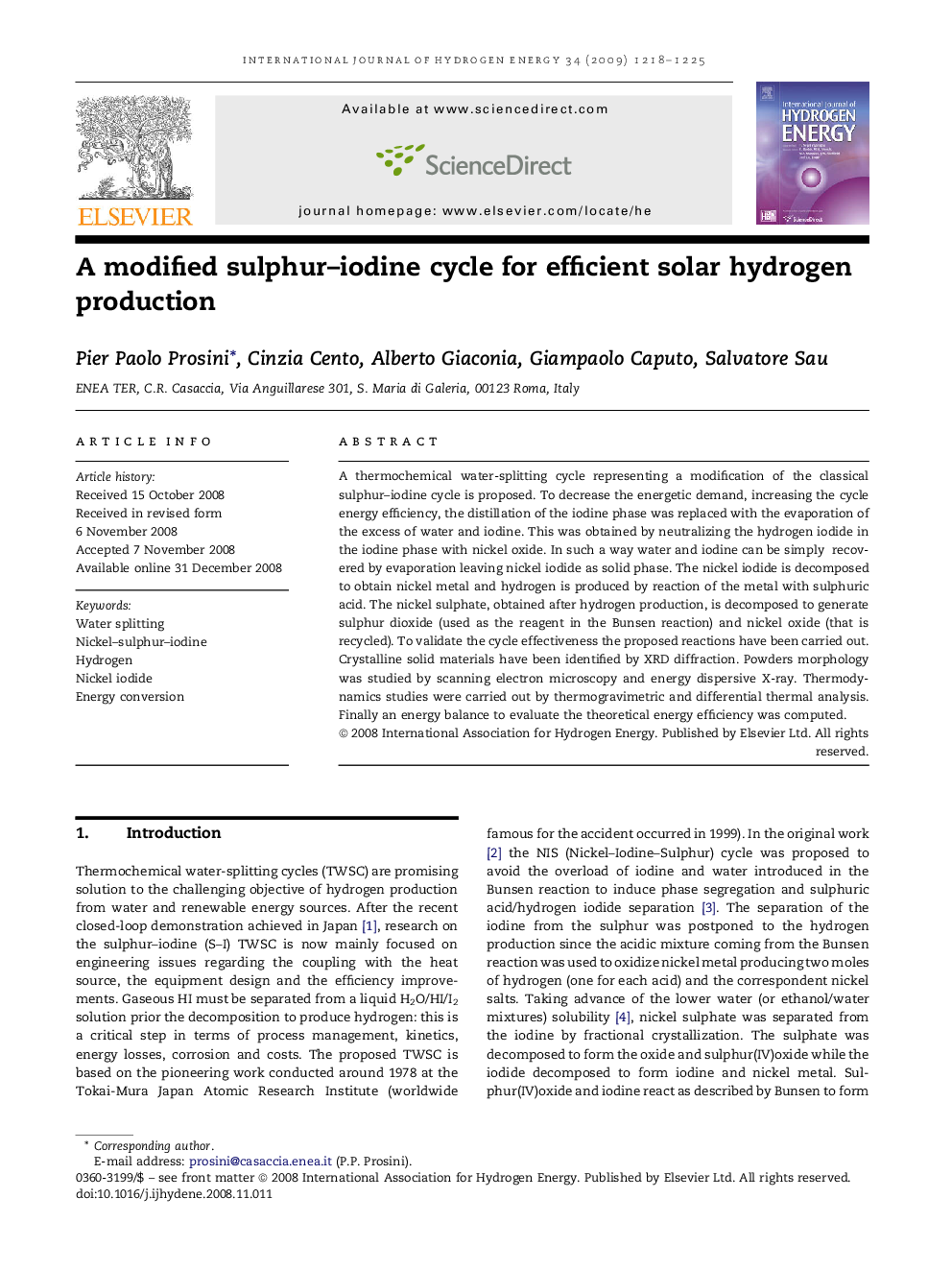| Article ID | Journal | Published Year | Pages | File Type |
|---|---|---|---|---|
| 1283328 | International Journal of Hydrogen Energy | 2009 | 8 Pages |
A thermochemical water-splitting cycle representing a modification of the classical sulphur–iodine cycle is proposed. To decrease the energetic demand, increasing the cycle energy efficiency, the distillation of the iodine phase was replaced with the evaporation of the excess of water and iodine. This was obtained by neutralizing the hydrogen iodide in the iodine phase with nickel oxide. In such a way water and iodine can be simply recovered by evaporation leaving nickel iodide as solid phase. The nickel iodide is decomposed to obtain nickel metal and hydrogen is produced by reaction of the metal with sulphuric acid. The nickel sulphate, obtained after hydrogen production, is decomposed to generate sulphur dioxide (used as the reagent in the Bunsen reaction) and nickel oxide (that is recycled). To validate the cycle effectiveness the proposed reactions have been carried out. Crystalline solid materials have been identified by XRD diffraction. Powders morphology was studied by scanning electron microscopy and energy dispersive X-ray. Thermodynamics studies were carried out by thermogravimetric and differential thermal analysis. Finally an energy balance to evaluate the theoretical energy efficiency was computed.
